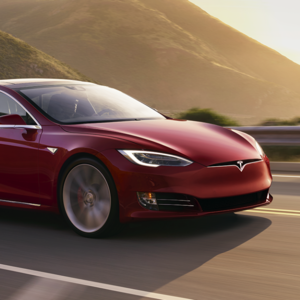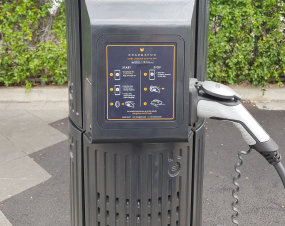Would you enjoy knowing where the red light is before you reach it, the time it will change and the perfect speed to arrive as it turns green? We all would, and for some American & European drivers it’s already a reality. Meet networked traffic lights.

There was a time when Australia led the world in traffic management. In the early 1970s, while the world relied on simple timers to operate their traffic lights, engineers in Sydney developed SCATS, the Sydney Coordinated Adaptive Traffic System, the first ever system that could detect traffic arriving at lights and calibrate red/green change times accordingly.

And it was an enormous success. While the complexity and technology have advanced with the times, SCATS has remained in-use in dozens of countries worldwide. If you see an intersection with cut-out marks in the asphalt, chances are it’s using SCATS to measure and respond to traffic flow as it changes.
But as effective as SCATS is, it’s a long way from the cutting edge of 2020 traffic technology. For the past few years this has been smart lights, the web-integrated and algorithm-led lights that optimise traffic flow through entire city networks — not just a single intersection.
But bringing lights online doesn’t just allow them to take in information, it makes it possible for drivers to be informed of reds and adapt to stop times in advance. That’s networked traffic lights.
Bring the light to the driver
Audi have been trialling networked traffic light integration with their cars in a handful of US and German cities. They began in 2016 in Las Vegas and have since expanded the program to over 10,000 American intersections, and now to Ingolstadt and Dusseldorf in Germany.
Drivers in an Audi networked to its local traffic light system are shown the colour of the upcoming light. The system automatically calculates the perfect speed to reach the intersection on green if possible, and if not will display the time until the next change.

Rather than using lights alone to optimize traffic flow, these networks allow drivers to anticipate changes and adjust their speed in advance. Audi has reported fuel savings of 15% in a pilot project of the system.
The electrification of Audi
The timings and speed estimates shown to drivers aren’t always perfect, however. Andre Hainzlmaier, Audi head of development for Apps, Connected Services and Smart City, said:
“Exact forecasts [for light timings] are the biggest challenge. Most signals react variably to traffic volume and continuously adapt the intervals at which they switch between red and green.”
The communication between car and lights goes both ways:
“The cars send anonymized data when traffic lights are crossed to an Audi backend, which checks whether the actual crossings of traffic lights correspond to the forecast data. Only after this are the traffic lights cleared for the display in the car,” Heinzlmaier explained.
“We aggregate the recorded data into reports that we will make available to the city authorities. Traffic lights can then be given more efficient phasing and traffic will flow better.”
Quick response
The advantages of connecting lights and cars are many, and even after widespread implementation it will take years to fully realise the potential of the technology. Just knowing the timing of traffic lights is only the beginning.
The benefits of networked traffic lights grow significantly with the adoption of fully self-driving cars. Electric vehicles have led the charge towards vehicle autonomy in recent years. Tesla’s AutoPilot is widely regarded as the most advanced today at ‘Level 2.5 autonomy’ with other automakers close behind. Current estimates suggest we’re only a few years away from the first Level 5 autonomous vehicles.
The 5 levels of autonomous vehicles explained
It’s already well understood that self-driving cars are more fuel efficient and smoother in traffic, especially when human drivers become rare or absent from the roads. Developing that technology further to anticipate traffic signals is only going to improve that performance.
And it could save lives, too. Networked light technology can allow emergency services to change signal timings in advance; the days of ambulances threading through cross-traffic at intersections might be numbered. This will reduce congestion on-route and speed up emergency response.
Can you think of more uses for networked traffic light tech? Should Australia invest in making the switch? Let us know and check back regularly for more EV news and updates from the JET Charge journal.





